With the arrival of June we have ever more newly hatched young to spot and Otters are making an appearance with surprising regularity.
Three out of the five Great Crested Grebe pairs that we reported were nesting on Salhouse Broad have now hatched delightful little “Grebelets”. Our passengers have loved seeing the Grebelets being carried around on their mother’s back – as shown on this picture.
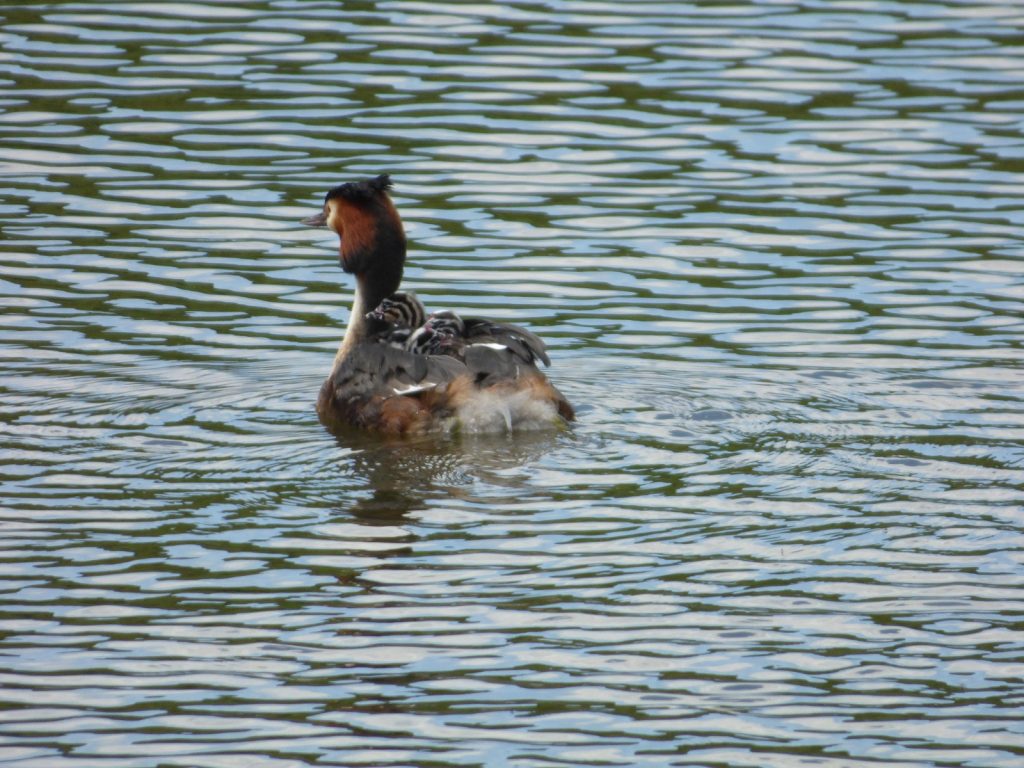
There are still two Grebes sitting on their remarkable floating nests on Salhouse Broad – a sight that is also capturing the imagination of our passengers. It’s surprising how many materials are used to build the nest – from lily leaves to reeds and even a gold chocolate wrapper that one has collected as decoration. The male Grebes work really hard collecting these materials and then pass it over to the female on the nest who carefully decides where to arrange the “furniture”.
This picture shows a Grebe nesting on the nearby Hoveton Great Broad, which is located just opposite Salhouse Broad but can only be reached via a special nature trail, accessible only by boat. It’s an important nature reserve that has been closed to boat traffic for over a century and is well worth a visit by day boat.
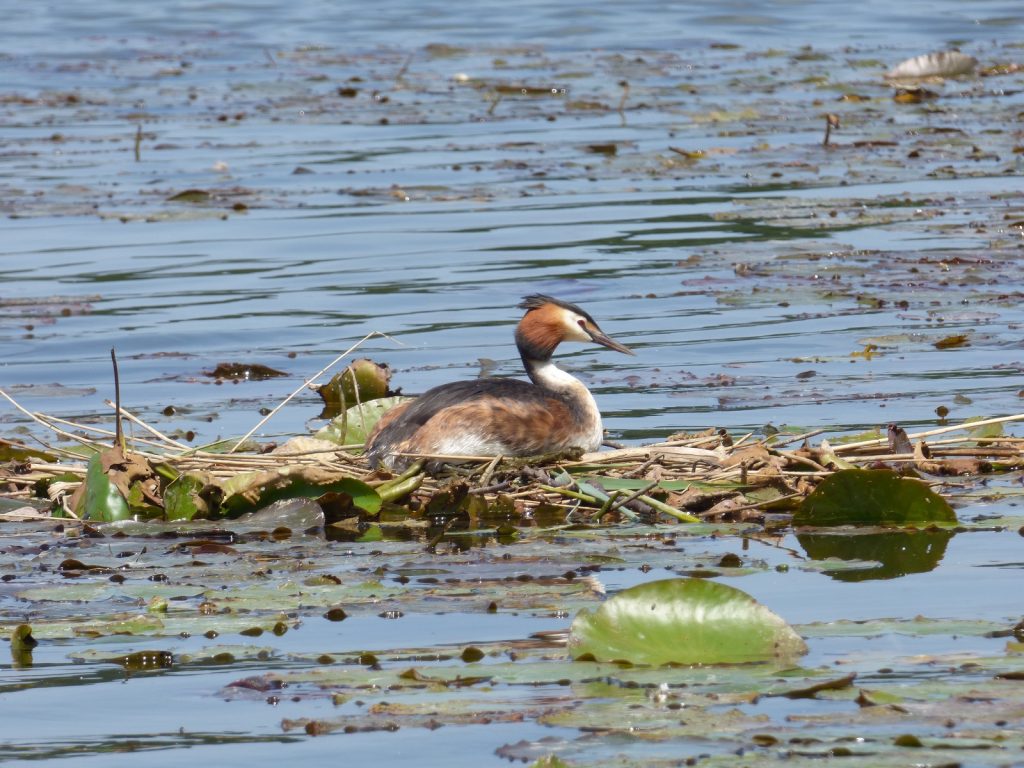
A highlight on Hoveton Great Broad is a large number of Common Terns arriving from Africa to nest on a specially designed nesting platform (shown below). The population is being carefully surveyed by Natural England, as fewer Common Terns had arrived in recent years but things are looking more positive for 2017.
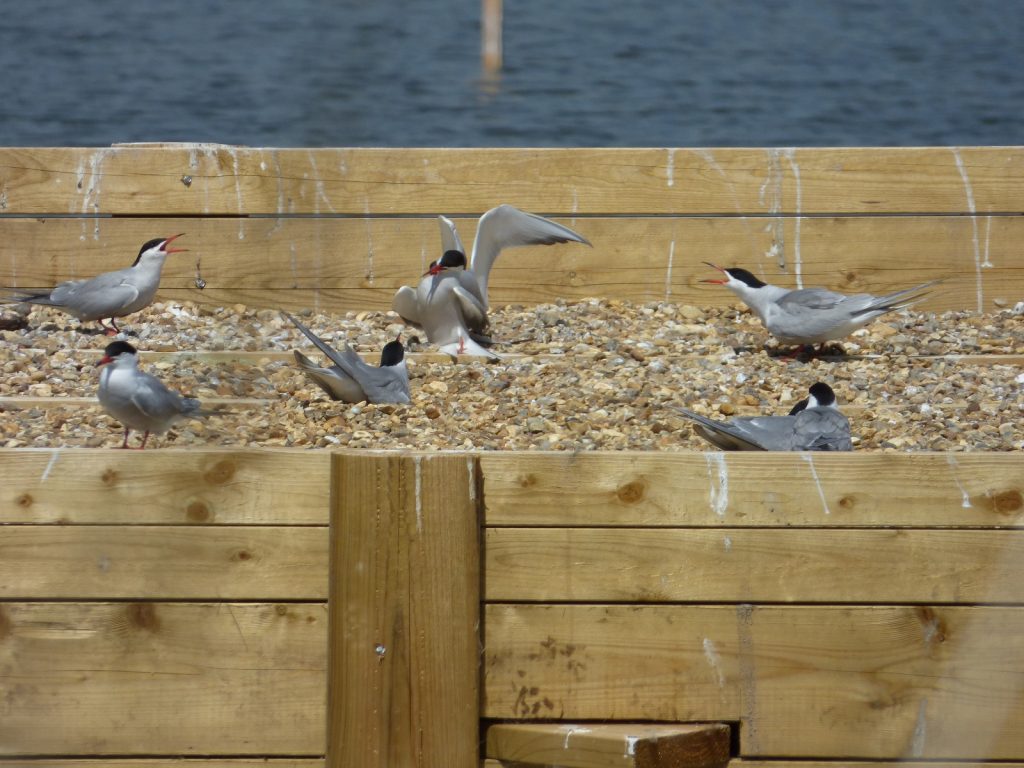
It’s not just the Common Terns using the nesting platform. This picture shows a Black Headed Gull nesting amongst the terns as well as a cormorant peering over. This situation is being monitored by Natural England as Black Headed Gulls can outcompete the Terns, but also offer more aggressive protection against predators. In short, it’s hard to say whether the Black Headed Gulls are a good or a bad thing for the Terns but we will keep you posted!
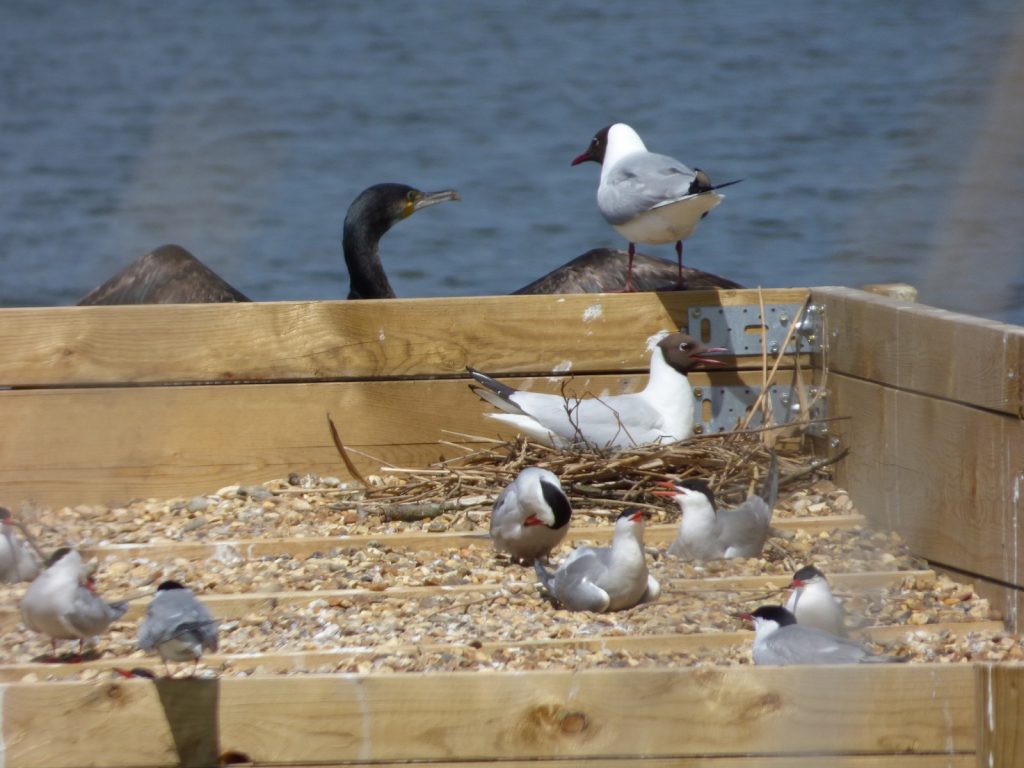
On the subject of Cormorants, very large numbers of the sea birds are arriving on Hoveton Great Broad and this picture shows them seeming to hunt in packs – although in reality they could all just be following a large shoal of fish.
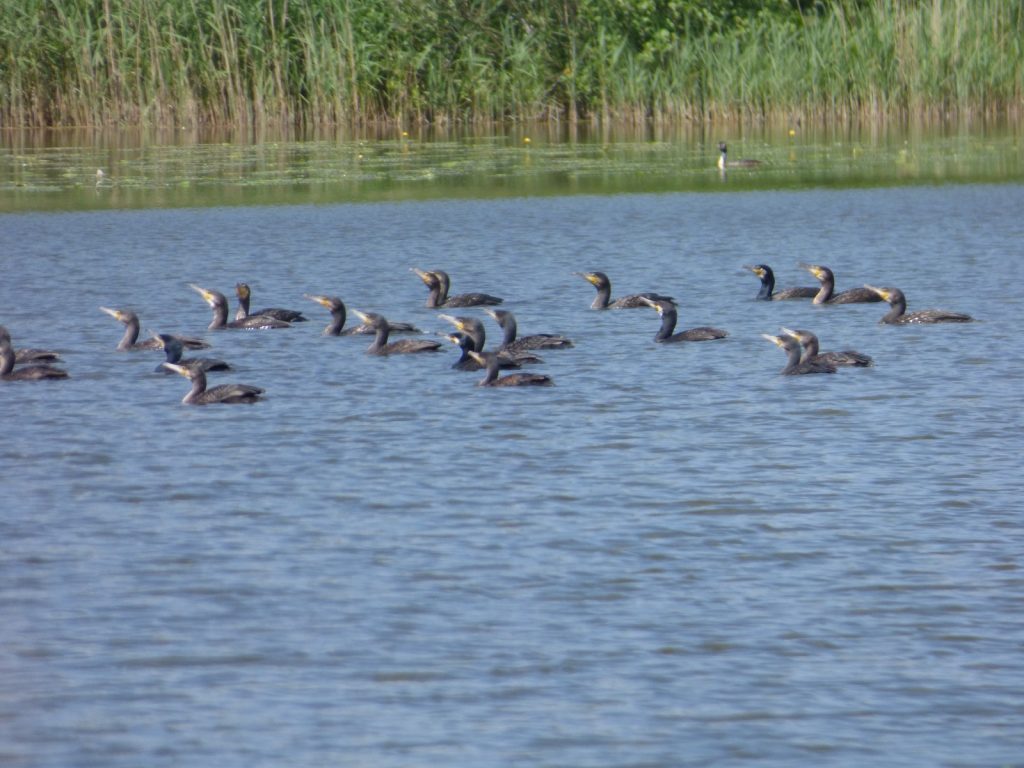
In amongst the jungle-like carr woodland at Hoveton Great Broad nature trail we have been enjoying watching a Woodpecker feeding her chicks in a hole in a tree – as shown below.
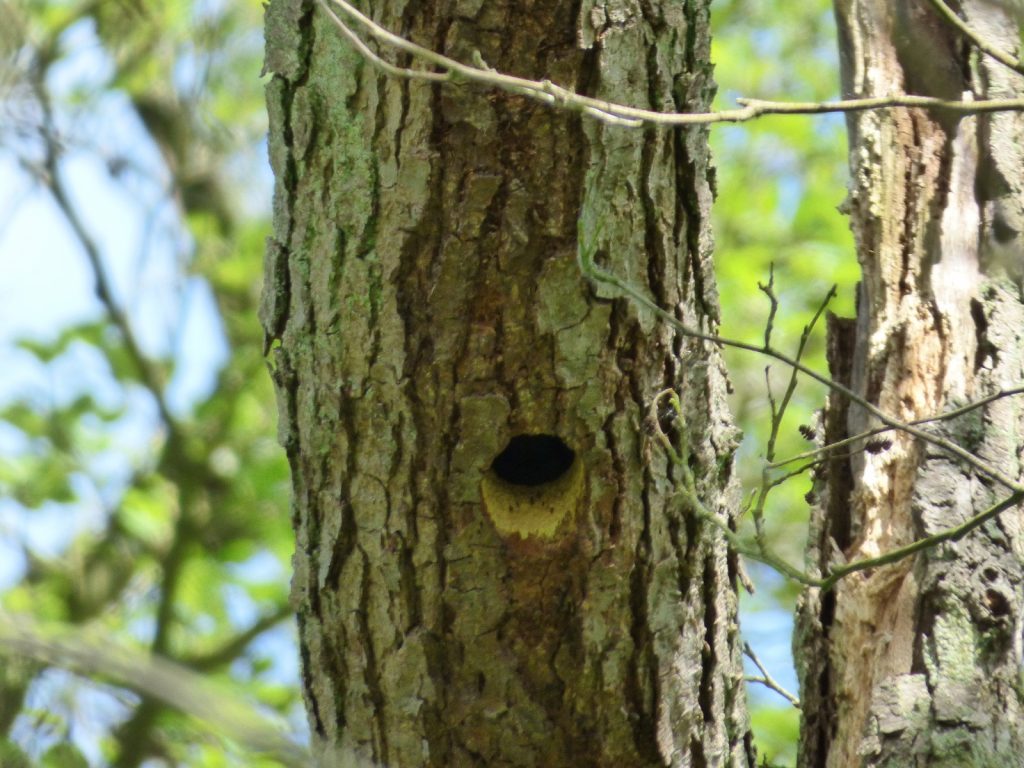
Back out on the river near Wroxham Broad we took these lovely pictures of a Heron hunting in the margins and a Gadwall duck. Take a close look at this endangered duck, which is on the RSPB Amber list, and you’ll see that it’s grey colour is made up of exquisitely fine barring and speckling.
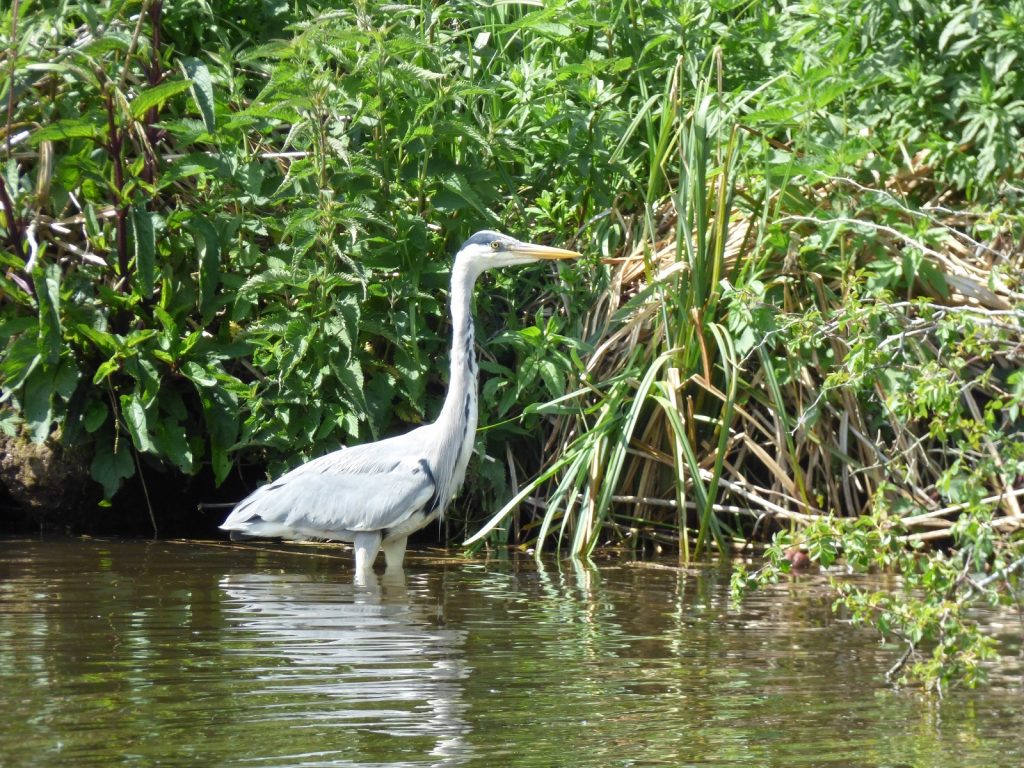
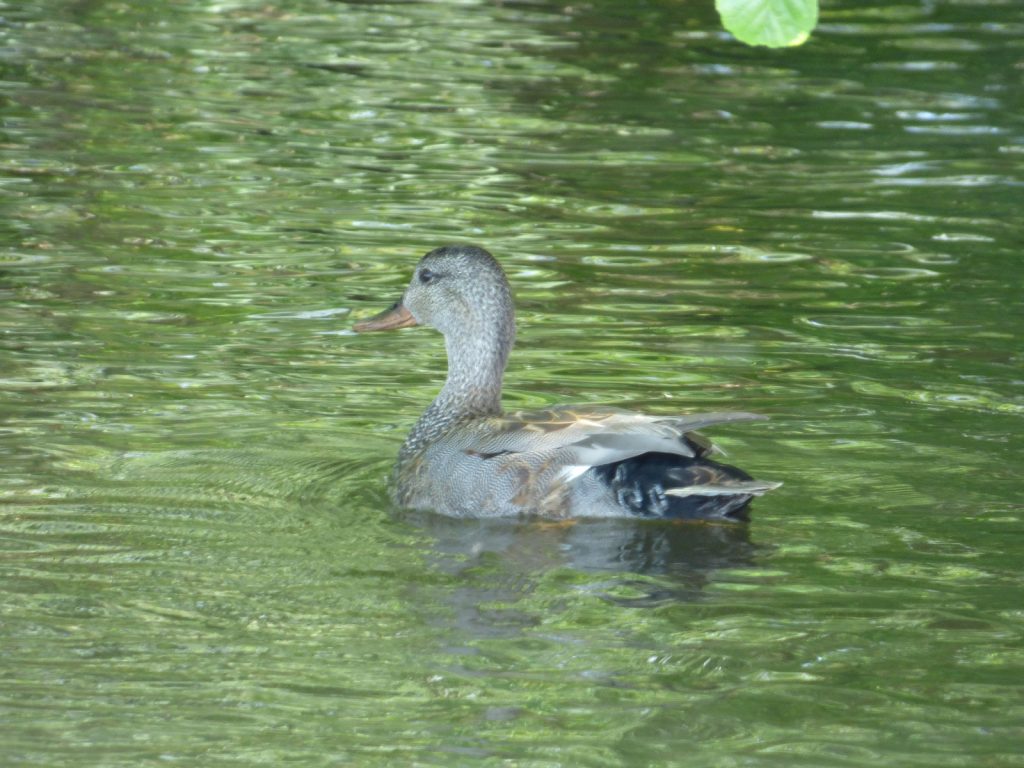
Back in Wroxham we now have three families of swans with their delightful little Cygnets. The swans seem much less territorial than last year and seem to be crossing over territory within the river without too much squabbling.
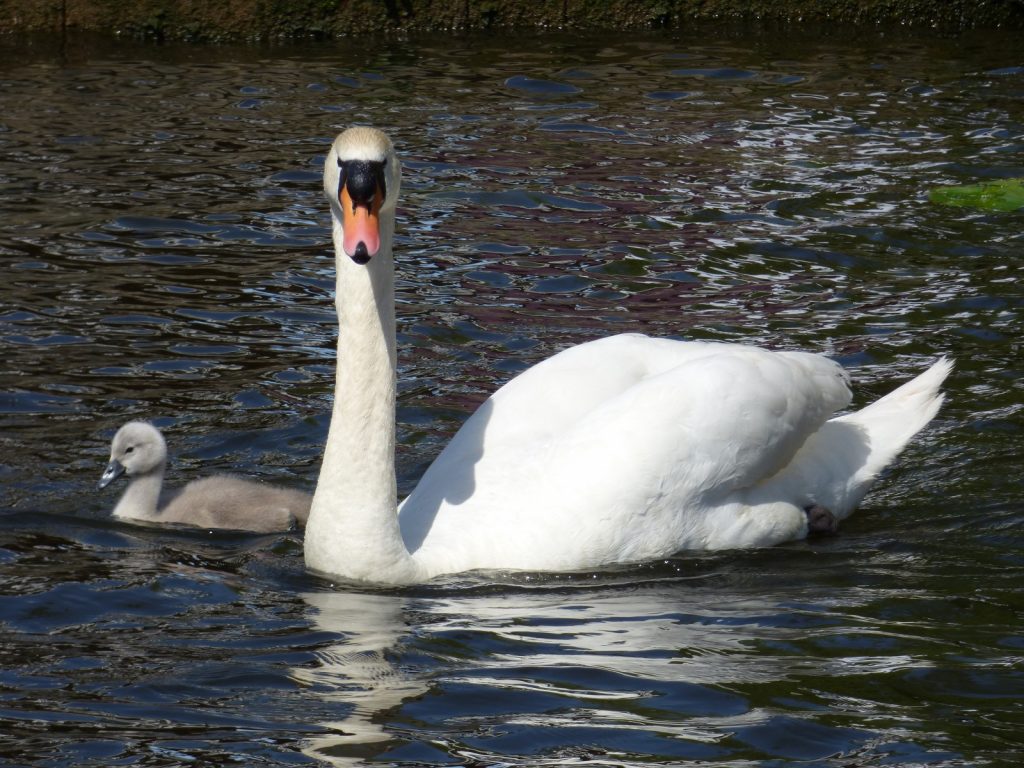
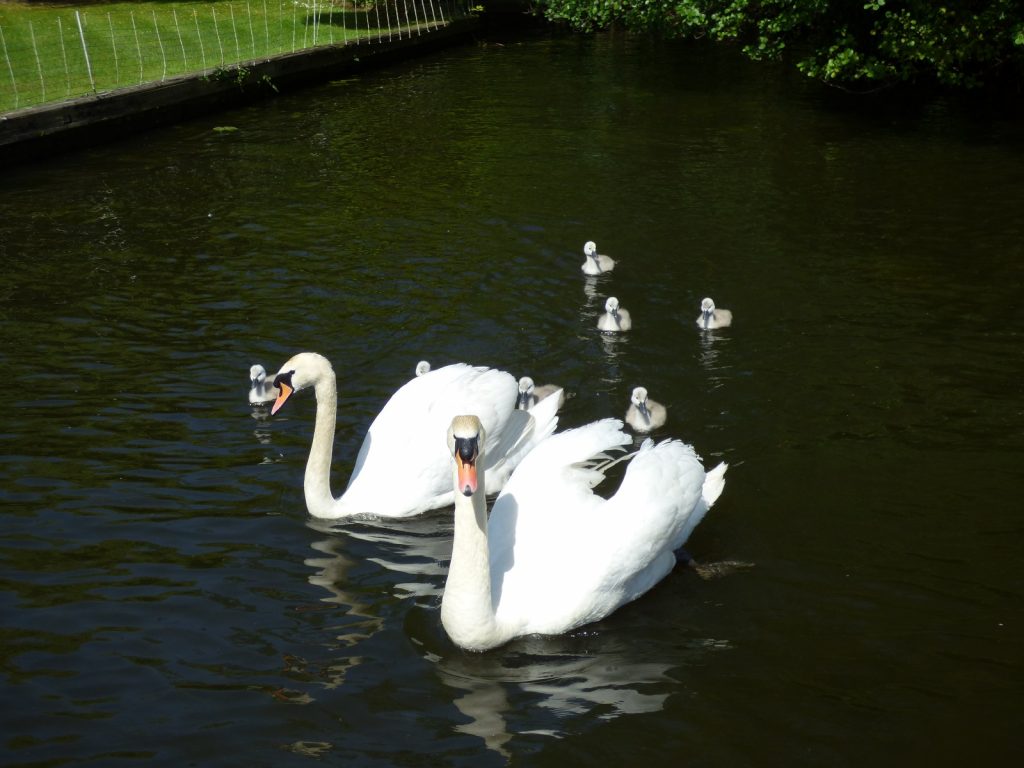
Excitingly, our boatyard is proving a hotspot for otter activity. Years ago Otters would have been a very rare sight indeed but we are now seeing them with remarkable regularity. One of our day boat lads, Joe, managed to film a dog otter walking across our car park while our skipper Oli, had an Otter come up right under his feet while filling up the water tank on one of our trip boats. He managed to grab his camera in time to show the otter swimming away across our boat basin.
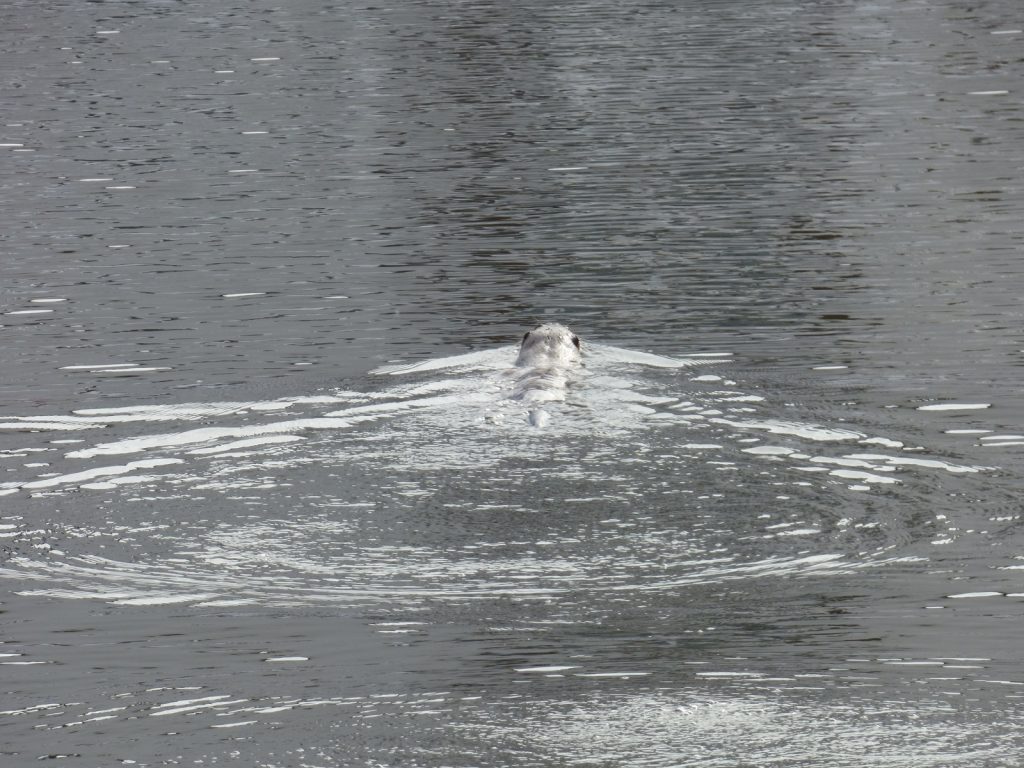
Some passengers have also been lucky enough to see Otters on our boat trips. Perhaps the most amusing sighting came when an otter ran behind a lady tending to her riverside garden in Wroxham village without her even noticing it – though all our passengers did! The best sighting, however, came just outside Barton House in Wroxham, where a female otter swam right beside our trip boat – so everyone got a great view!
Another great sight in our boat basin, pictured by one of our skippers Tobi below, is a beautiful Eyed Hawk Moth in our boat basin. If provoked the insect flashes its hindwings, which are decorated with intense blue and black ‘eyes’ on a pinkish background.
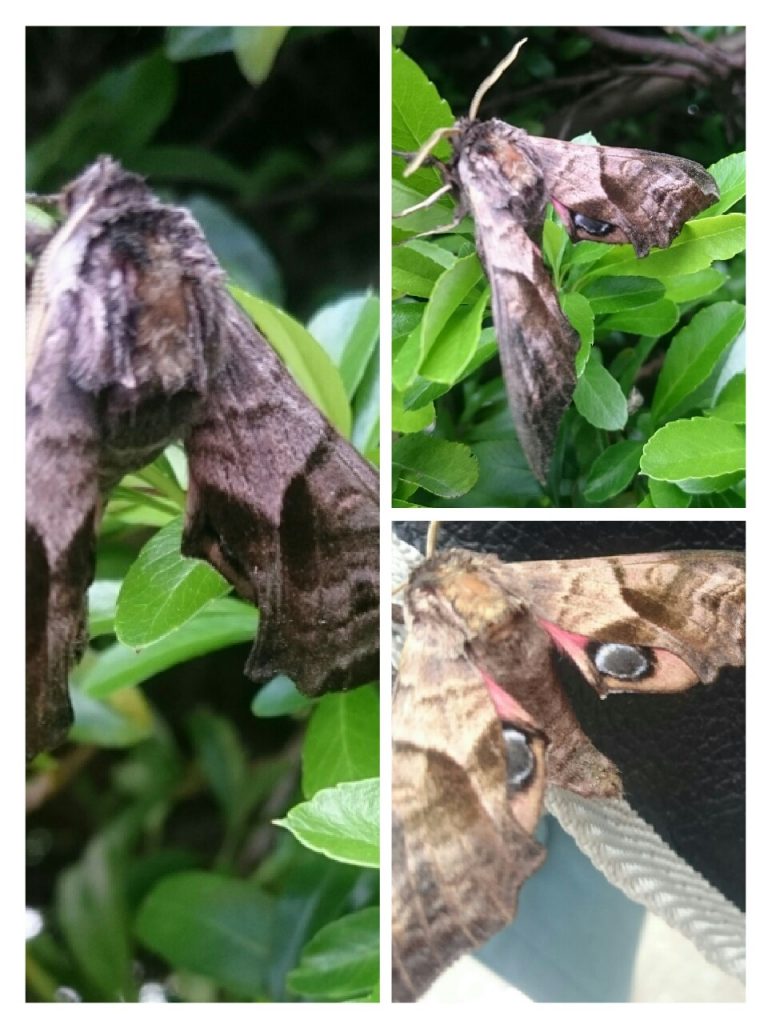
But perhaps our favourite sighting of an insect is Norfolk’s iconic Swallowtail butterfly – which we have seen on some of our trips on Woodbastwick reach. It’s Britain’s largest butterfly, with a swallow like forked tail, but is only found on the Broads because its caterpillar can only eat a plant called milk parsley, which will only live in Norfolk’s reed and sedge beds.
Words and pictures – Oliver Franzen
With so many wonderful sights on the river why not join us for a boat trip or hire a dayboat and explore on your own. Tel: 01603 782 207.
